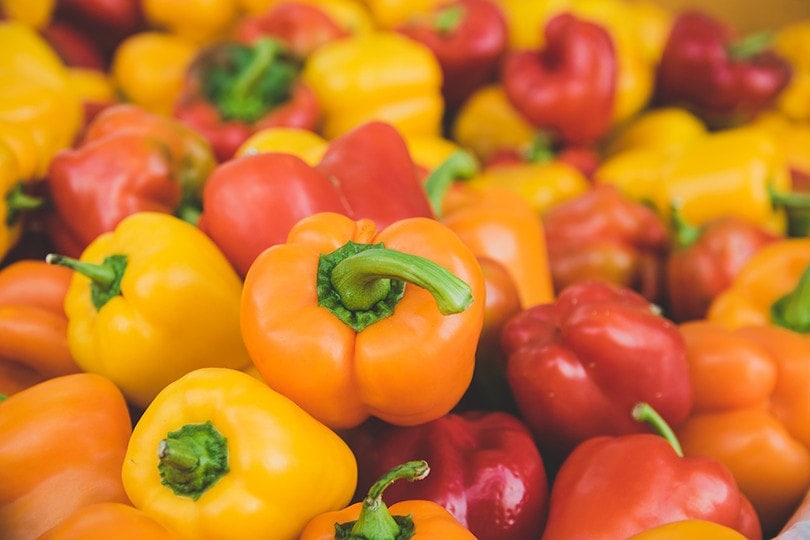How Long Do Parrots Live: Average Lifespan, Data & Care

Updated on
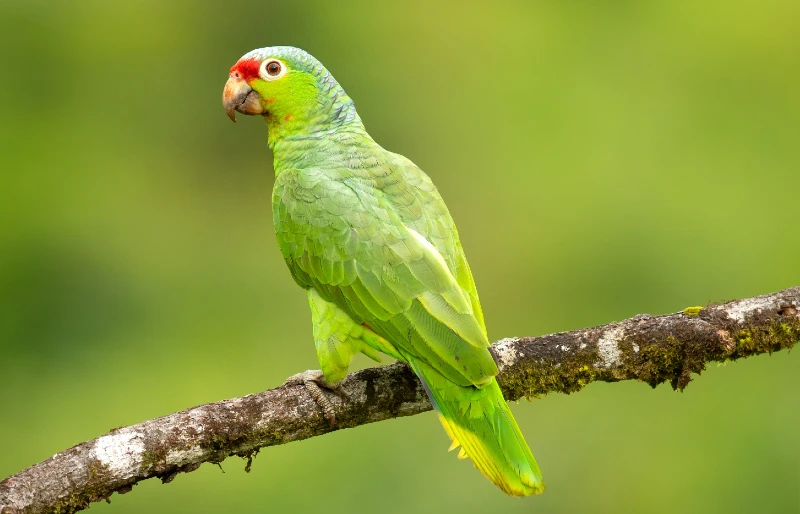
Click to Skip Ahead
Parrots are beautiful, affectionate, intelligent pets, so it’s unsurprising that people are drawn to them. However, they are also incredibly high-maintenance and can be challenging to care for. Researching what it takes to look after one of these birds before bringing one into your family is crucial.
There are around 400 species of parrot and their life span, diet and behaviors vary widely. Parrots vary in size, from the tiny budgie to the imposing Macaw, and their average lifespans also differ, with some parrots living as little as 5 years and others living as long as 80-plus years. They are, in some cases, a lifelong commitment. So, let’s look at what is required to ensure your parrot lives as long and as happily as possible.
Parrot Average Lifespan
Parrots live for various lengths of time, and to better understand their averages, we’ve categorized the species by their size and lifespan. Typically, small parrots don’t live as long as larger parrots, but there is an overlap, as you’ll see in our following examples:
Small Parrots
| Small Parrot | Size | Lifespan |
| Parrotlet | 4.5–5 inches | 15–20 years |
| Parakeet | 5–11 inches | 5–15 years |
| Lovebird | 5–7 inches | 10–15 years |
Medium Parrots
| Medium Parrot | Size | Lifespan |
| Caique | 9–10 inches | 25–40 years |
| Pionus Parrot | 10–12 inches | 20–40 years |
| Conure | 12 inches | 20–30 years |
| Hawkhead | 12-14 inches | 30-50 years |
| African Grey | 12–16 inches | 40–60 years |
Large Parrots
| Large Parrot | Size | Lifespan |
| Cockatoo | 12–24 inches | 40–60 years |
| Yellow-Naped Amazon | 15-18 inches | 60-80 years |
| Macaw | 12–40 inches | 30–50+ years |
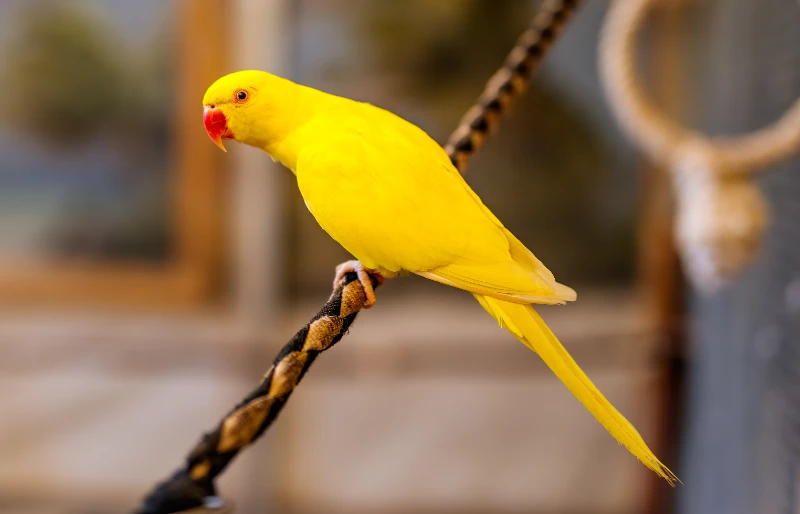
How Long Do Parrots Live in the Wild?
Parrots tend to live longer as pets than they do in the wild.1 While parrots in the wild have access to more exercise and a wider option for nutrition, there are diseases, predators, competition for resources, and harsh weather that pet birds don’t have to deal with. For example, the Yellow-Naped Amazon parrot can live 60 to 80 years in your home, but they are only expected to live 20 to 30 years in the wild.
Why Do Some Parrots Live Longer Than Others
1. Feeding & Diet
A parrot’s diet varies from species to species, but contrary to popular belief, the diet shouldn’t be made up of just mixed seeds. It is very important to research the specific diet that your species of parrot should eat, the following information is a rough guideline only. Small birds like Cockatiels or Budgies can be fed a mixture of pellets and high-quality seeds to keep up with their high metabolism and energy needs. Seeds are inappropriate for larger species like Macaws or Amazon Greys as they don’t provide enough healthy nutrients. Additionally, the extra calories in seeds are linked to weight gain and liver disease.
Around 50%–80% of your parrot’s diet should be high-quality pellets. Avoid any that contain additives like dyes or sugar, and the remaining 20%–50% should be made up of fresh food, such as:
- Whole grains like rice, barley, oats, or buckwheat
- Fresh fruit or vegetables such as apples, bananas, grapes, pomegranates, papaya, peas, beetroot, green beans, and carrots can be served raw or steamed
- Seeds and unsalted nuts like walnuts, almonds, and pecanscan be given in small amounts
- Sprouted or soaked and cooked legumes
Nuts, seeds, and fruit should only make up around 10%–20% of your parrot’s diet combined. It’s important to note that your pet parrot’s diet will not be the same as in the wild since wild parrots use more energy than your pet. So, foods like nuts, seeds, and fruits should only be offered as a treat. If you are unsure what your parrot should eat, contact your vet, who can offer advice based on your parrot’s species and specific needs.

2. Environment
It’s vital to create an environment for your parrot to thrive. The cage should be situated in a quiet place, and they will need space to fly and exercise. If you have the space, you could create an aviary in the yard where they can sunbathe or seek shelter. This will also keep them out of mischief, as parrots may chew things they shouldn’t if they become bored. Esure you parrot-proof your home before they arrive so they can’t reach anything harmful!
The simple rule regarding the cage is the bigger, the better. They should be able to stretch out their wings without touching the sides or anything inside, like toys. Ensure the door is big enough for them to get in and out easily.
Parrots love to climb, and thick horizontal bars and perches that don’t bend are essential for the cage. It’s best to buy a stainless steel cage as it is non-toxic should your parrot chew on the bars.
3. Care
Birds are social creatures and time spent with them is invaluable. Since some of the birds can live over 50 years, you must prepare for a high-maintenance pet that will be around for a long time.
Parrots have been known to nuzzle into you while you’re watching television, but they are also wild animals at heart. As prey animals, they may need more time and patience to come around to you than other types of pets would. Training is a beautiful way to bond with your parrot and a great way to set boundaries and introduce house rules that can be maintained throughout their lives.
Parrots love to be around when you’re doing something mundane. Do you need to fold laundry? Your parrot can sit on your shoulder and observe to ensure you’re doing it right.
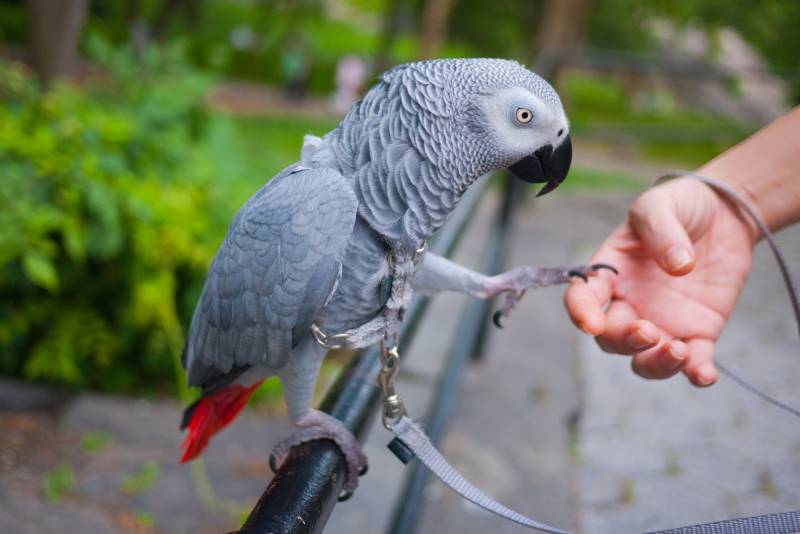
4. Cleaning
Your parrot’s cage will need to be cleaned regularly to ensure they have a healthy, comfortable environment. Replace the liner daily to remove any droppings. They also need fresh water to drink and bathe in. Parrots love to look their best, so they need somewhere to wash themselves. Keep the food and water dishes out from under perches so that they won’t catch any droppings.
The cage should be washed and disinfected weekly. Food and water dishes should be cleaned daily, and fabric toys should be replaced every two to six months. Check fabric toys or ropes daily to ensure no loose string can get caught on your parrot and injure them. Disinfecting these toys weekly or as required is also a good idea.
5. Pairing
Parrots have been known to bicker just like we do, which becomes trickier when one parrot’s temperament is aggressive. While some species are peaceful, others are resistant to pairing. Ideally, you want two sociable parrots together, as a sociable parrot paired with an aggressive one isn’t advisable.
You should be cautious and take it slow when introducing one parrot to one another. Do some research prior to trying a second parrot, and you can confirm with your vet or the seller if the parrot you’re considering getting is compatible with another.
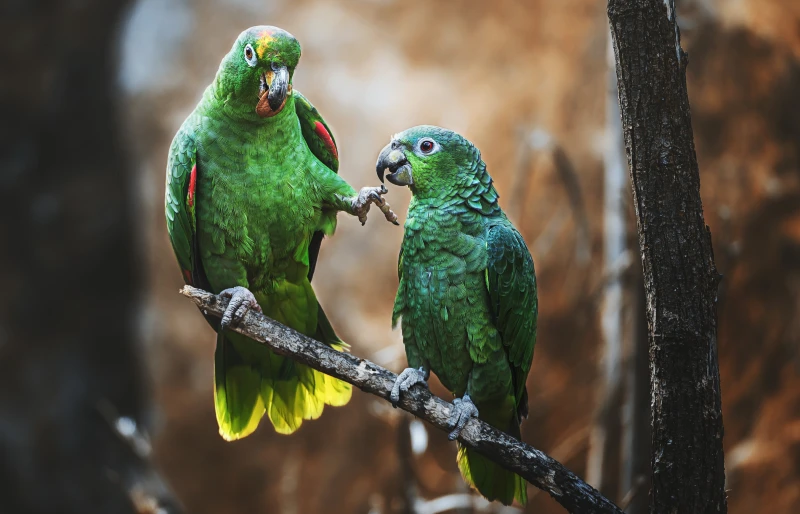
6. Healthcare
As with any pet, keeping up with scheduled vet visits is crucial. If you are ever worried about your parrot’s health, contact your vet outside of these visits. While it’s true that avian disease can affect any bird, some species are more likely to develop health conditions. Research the conditions commonly affecting the species you decide on to know what to look for.
- Change in appetite
- Change in consistency or color of droppings
- Difficulty maintaining their balance
- Feathers stay fluffy or ruffled
The 7 Life Stages of a Parrot
The life stages of a parrot differ depending on the species, but you might recognize some of the stages as being very similar to those humans go through.
1. Baby
Newborn parrots are blind and featherless. Parrot parents feed their babies regurgitated food, but humans feed them a parrot formula through a syringe. The content of the formula differs depending on the species.
2. Imprinting
The parrot will no longer be completely blind and imprint on the first thing they see. This is often their parents. If you get a parrot from a breeder, chances are they will have imprinted on a human, so they will be used to human presence when they come to you. This doesn’t mean a parrot can’t be a good pet if they don’t see a human when they first open their eyes, but it may require more training and patience.
3. Fledgling
The parrot will learn to fly at this age but still depend on their parents to feed them.
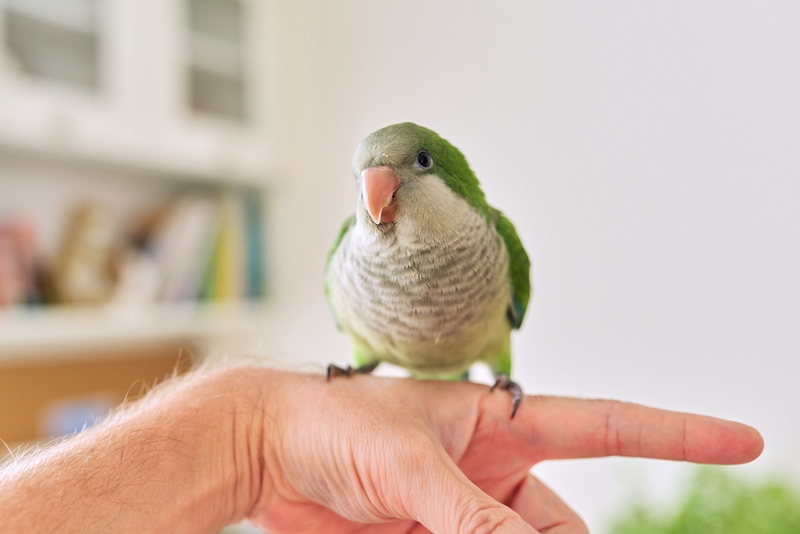
4. Weaning
The parrot will be weaned off their parent feedings and can now eat solid food. Some trained breeders can help with this stage, as it’s essential to get it right. Solid food will be introduced to your parrot slowly to prevent them from becoming malnourished.
5. Juvenile
Your parrot will now be able to fend for themselves. Most parrots are sold at this stage, and it’s a good time to buy them because they will require less time and attention than previous stages. Juvenile parrots won’t have their full adult plumage yet. This comes in after some molting seasons.
6. Puberty
Your parrot becomes sexually mature during this stage, and how they demonstrate they are will differ depending on their species. Some may regurgitate food for you. Others will push their backs against you trying to get you to mate with them. This stage requires a lot of patience, and a good way to keep them occupied is to make sure they’re mentally stimulated and physically active.
7. Adulthood
Your parrot will have been through several seasons at this point and will settle into their life as part of your family.

How to Tell Your Parrot’s Age
If you have rescued your pet parrot, you will have difficulty pinning down their exact age. There are some clues, however, that might help you estimate an age. For example, they aren’t yet an adult if they don’t have their full color. Older parrots tend to have rougher feathers, and the color may fade as they age. There might be damage to feathers.
Older birds slow down and won’t be as active as younger birds. They are also more prone to serious illnesses, or they might have developed arthritis, liver disease, or eye problems. The color of their eyes and beaks may change as they age. Ask your vet if you have any questions about your parrot’s age.
Conclusion
The lifespan of a parrot depends on various factors, such as the species, care, diet, and nutrition, and how competent you are as an owner because they are needy pets. Wild parrots tend to have shorter lifespans because of a lack of health care, competition for resources, and harsh conditions. Regardless of their species, parrots are wonderful pets that will require a lifelong commitment in some cases, so take your time making this decision!
Featured Image Credit: Milan Zygmunt, Shutterstock





